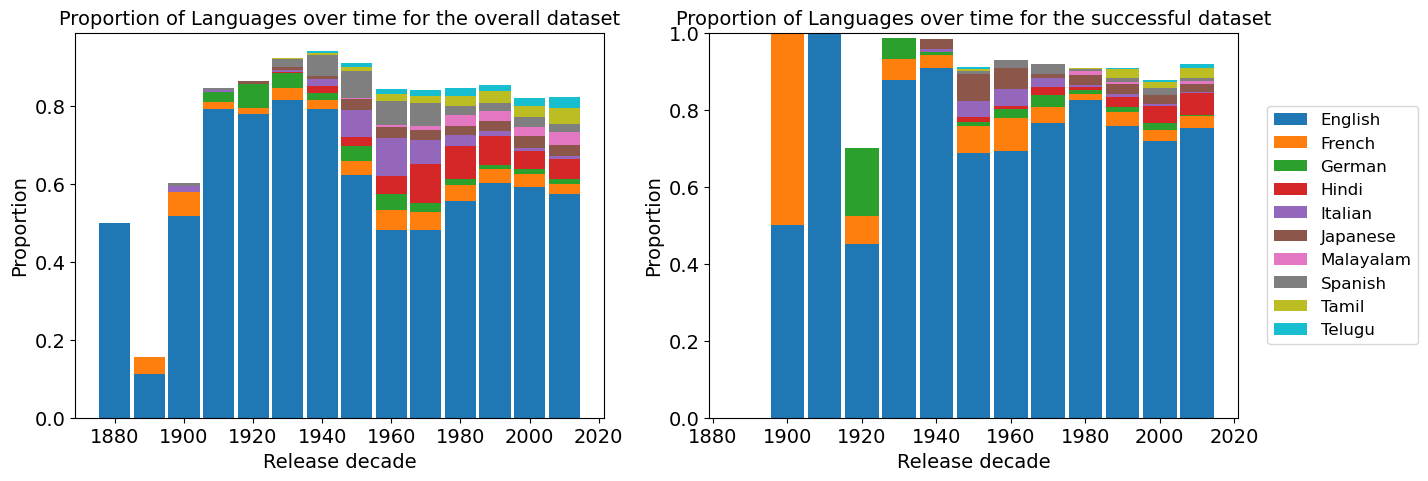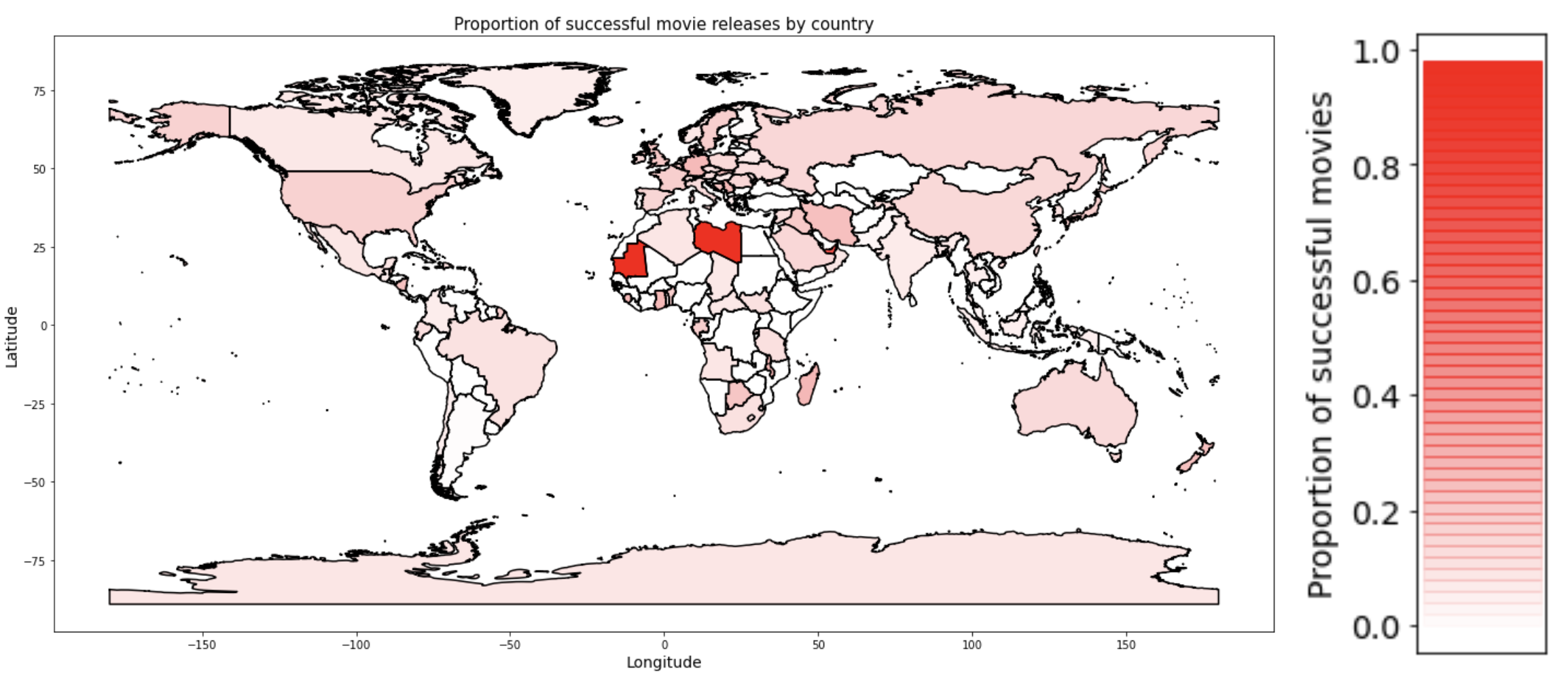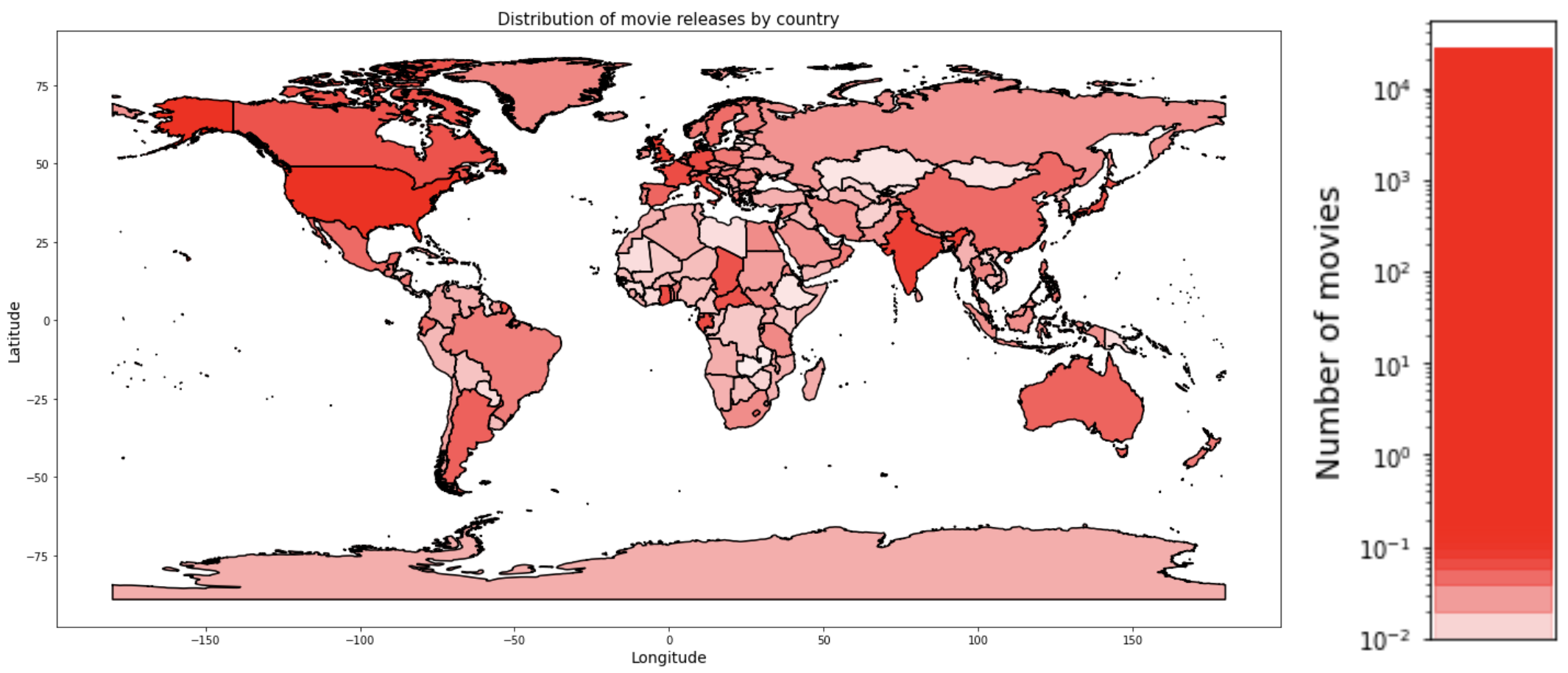What are the ingredients for a successful movie?
To answer this question we ran a linear regression model using the most descriptive features, which we found (Runtime, Budget, Genre and Country). This was done in order to find the coefficients associated with each feature, the entire result can be observed in our notebook.
Тhe coefficient for runtime is rather high, indicating that people enjoy watching longer films. This could be caused by various factors, but the most prominent would be the fact that a story could be told best by giving more pieces of information to the audience and for that, the movie would need overall more time. The location of our movie could be the United Kingdom, Japan or New Zealand, as many of the household movies have been shot there throughout the years.
For genre, interestingly the Animation genre tends to outperform the rest, but Drama is a close second and may be more appropriate, depending on the target audience.
Directors play a major role in the creation of a movie, therefore selecting the right one is vital for its success.
If we decide to go with the Animation genre, then our data shows that in present days, Rich Moore's animations perform best (Zootopia, Wreck-it Ralph). Going to the greatest decade, we see that our choice will have to be Roger Allers (director of Lion King and The Little Mermaid).
Looking at Drama, Olivier Nakache and Éric Toledano are a clear duo, which we would like to have, considering movies from the past 10 years. However, the greatest decade would have to go to Frank Darabont in his period between 1990 and 2000, responsible for The Shawshank Redemption and The Green Mile.
Directors have their ups and downs throughout their careers, so if we want to be certain of the dependability of a director, then we would choose Yoshiaki Kawajiri for the Animation genre and Éric Rohmer for the Drama genre.




